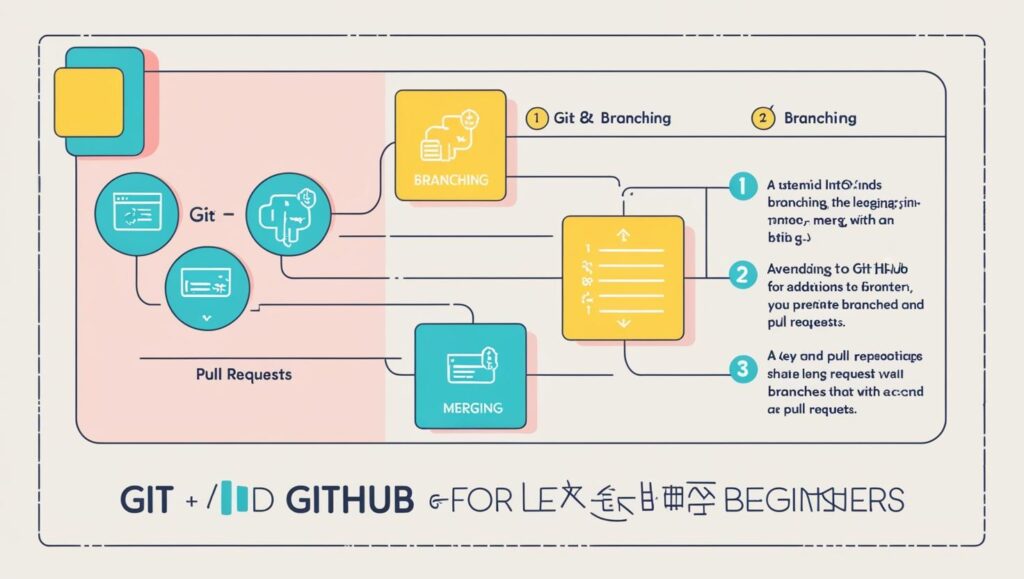In the realm of software development, Git and GitHub are indispensable tools that many developers rely on to streamline their workflows and collaborate effectively. Whether you’re a budding programmer or an experienced coder, understanding these platforms is crucial for managing your projects and contributing to others. This article serves as a beginner’s guide to unlocking the potential of Git and GitHub, demystifying their functionalities, and offering essential tips to master version control.
Navigating the Basics: Git and GitHub Explained
Git is a distributed version control system that allows developers to keep track of changes in their codebase. Initially developed by Linus Torvalds in 2005, Git has become the backbone of modern software development due to its speed, efficiency, and flexibility. In essence, Git enables multiple developers to work on a project simultaneously without overwriting each other’s changes. With Git, each developer maintains their own local repository, which can be synchronized with a remote repository to update or retrieve changes.
GitHub, on the other hand, is a web-based platform that leverages the capabilities of Git, providing a user-friendly interface to host and manage Git repositories. It extends Git’s functionality by adding features such as bug tracking, task management, and project collaboration tools. GitHub also fosters a thriving community where developers can share their projects, contribute to open-source initiatives, and build professional networks. By hosting repositories on GitHub, developers can showcase their work to potential employers, collaborate with others across the globe, and engage with a global community of programmers.
Understanding Git and GitHub’s fundamental concepts is essential for any developer. Key terms such as repositories, branches, commits, and pull requests form the foundation of version control workflows. A repository, or “repo,” is a storage location for code and project files. Branches allow developers to experiment with changes without affecting the main codebase, while commits record each change made to the code, creating a comprehensive history of the project’s evolution. Pull requests are proposals for changes to be merged into the main repository, serving as a core mechanism for collaboration and code review on GitHub.
Essential Tips for Mastering Version Control
As you delve deeper into Git and GitHub, mastering version control becomes a critical skill. One of the most important practices is committing changes frequently with clear and descriptive messages. This habit not only maintains an organized history of your project but also enables others to understand the rationale behind specific changes. A well-documented commit history can significantly ease the process of identifying when and why certain modifications were made, facilitating easier debugging and collaboration.
Another crucial tip is to leverage branching strategies effectively. Branching allows developers to work on different features or bug fixes simultaneously without disrupting the main codebase. Popular strategies like Git Flow or GitHub Flow provide structured workflows to manage branches and releases effectively. They help maintain stability in the main branch while allowing continuous integration and deployment of new features. Understanding and implementing a branching strategy that suits your project’s needs can greatly enhance productivity and maintain code quality.
Lastly, taking advantage of GitHub’s collaborative features is essential to mastering version control. Engaging in code reviews, participating in pull request discussions, and contributing to open-source projects are all beneficial practices. Code reviews not only identify potential issues but also promote knowledge sharing and skill development among team members. By participating in open-source projects on platforms like GitHub, developers can gain valuable experience, receive feedback from seasoned contributors, and expand their professional network.
Mastering Git and GitHub is an invaluable skill set in today’s digital landscape, offering developers the tools needed to manage projects efficiently and collaborate on a global scale. This guide has explored the foundational concepts and provided essential tips for those beginning their journey with version control. By understanding the basics, adopting effective practices, and leveraging collaborative features, developers can unlock the full potential of Git and GitHub, enhancing their workflow and contributing to the vibrant world of software development.


